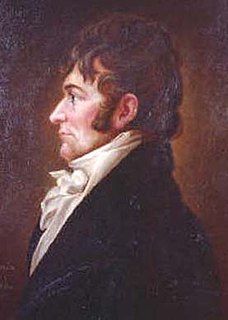| Mattaponi | |
|---|---|
 | |
| Former names | Brooke's Reserve |
| Alternative names | John Bowie, Jr. House |
| General information | |
| Coordinates | 38°44′19.5″N76°44′36.25″W / 38.738750°N 76.7434028°W Coordinates: 38°44′19.5″N76°44′36.25″W / 38.738750°N 76.7434028°W |
| Completed | c. 1820 |
Mattaponi, also known as the John Bowie Jr. House, is a historic home in Croom, Maryland, built c. 1820 on the foundation of an earlier house dating to the 1730s, [1] three miles northwest of Nottingham, Prince George's County, Maryland. [2]

Croom is an unincorporated community and census-designated place in Prince George's County, Maryland, United States. As of the 2010 census it had a population of 2,631. It largely consists of former tobacco farms and forests converting to Washington, DC bedroom subdivisions such as nearby Marlton. The main part of Patuxent River Park is in Croom.
Nottingham is a small town on the Patuxent River in Prince George's County, Maryland. It contains an archaeological site listed on the National Register of Historic Places in 1975.
John Bowie, Sr., who emigrated to colonial Maryland in 1705 from Scotland, purchased a large tract of land called "Brooke's Reserve" about two miles west of Nottingham for a son, Captain William Bowie, when the son was twenty-one years old. A large brick house was erected there that was called Mattaponi, the name of the nearest creek and a Native American word meaning "meeting of the waters". [1] The tract of land later became known by the name for the house. [3] The current house is the second, being built on the foundation of the first. A tribe by the name Mattaponi resided in what would become colonial Virginia.
Captain William Bowie was an early colonist in the Province of Maryland and an American Revolutionary, a member of the Assembly of Freemen, a delegate to the Annapolis Convention (1774–1776).
The Mattaponi tribe is one of only two Virginia Indian tribes in the Commonwealth of Virginia that owns reservation land, which it has held since the colonial era. The larger Mattaponi Indian Tribe lives in King William County on the reservation, which stretches along the borders of the Mattaponi River, near West Point, Virginia.
The Bowie family had extensive landholdings in the county and were important politically. [4] They settled in and near Nottingham during the colonial period, building a number of homes including Mattaponi. [3]
Robert Bowie, Governor of Maryland from 1803 to 1806 and 1811–12, is buried at Mattaponi and is believed to have been born there as well, [3] although this is not proven; as an adult, he made his residence at "The Cedars" in Nottingham on the Patuxent River. [1] Mattaponi is very similar in styling to the home he built nearby for his daughter, Bowieville, also brick covered with stucco. [4]

Robert Bowie served as the 11th Governor of the state of Maryland in the United States, from 1803 to 1806, and from 1811 to 1812.

The Patuxent River is a tributary of the Chesapeake Bay in the state of Maryland. There are three main river drainages for central Maryland: the Potomac River to the west passing through Washington, D.C., the Patapsco River to the northeast passing through Baltimore, and the Patuxent River between the two. The 908-square-mile (2,352 km2) Patuxent watershed had a rapidly growing population of 590,769 in 2000. It is the largest and longest river entirely within Maryland, and its watershed is the largest completely within the state.

Bowieville is a historic home located near Upper Marlboro in Prince George's County, Maryland, United States. It is an elegant two-part plantation house of the late Federal style, built of brick and covered with stucco. The architectural detail is transitional between the Federal and Greek Revival styles.
Walter Bowie also was born at Mattaponi. [3] [5]
In December 1846, Richard Lowndes Ogle married Priscilla Mackall Bowie at Mattaponi. [6]
Richard Lowndes Ogle was the son of Benjamin Ogle II and the grandson of Maryland Governor Benjamin Ogle.













